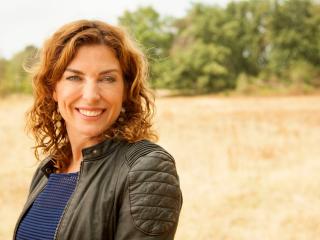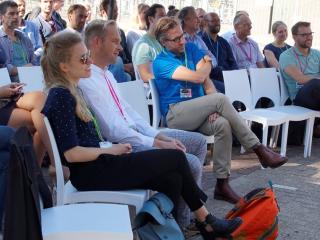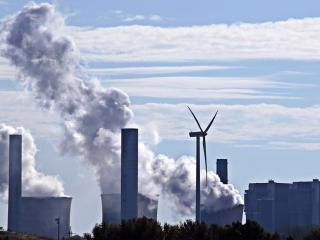SMILE: Together towards zero-energy neighborhoods
Making an entire neighborhood energy-neutral, how do you do that? It is a complex interplay of actors and factors. This is shown by the SMILE project, in which the university is also involved. SMILE’s objective is to get a better feel of what works and what does not, or not yet, in this context and under what circumstances. To that end, regional and local parties in ten Brabant neighborhoods are experimenting with different approaches.
Experimenting, learning, and innovating in social labs
In these times of energy transition, nearly zero-energy building (nZEB) and off-the-gas-grid are points of departure in every new building project. But it is also the Dutch Cabinet’s ambition that all existing homes need to be properly insulated and heated by means of renewable energy sources with zero CO2 emissions by 2050 at the latest.
How do you organize the energy transition, world-wide and in your own street? - Martijn Groenleer
Energy transition at a neighborhood level
At a regional level in Central Brabant, that ambitious target has inspired the SMILE project (Social Innovation Labs Energy transition). As part of this project, the climate objectives are translated into plans for concrete sustainable energy measures at a neighborhood level. To that end, residents of ten neighborhoods/villages in Tilburg, Hilvarenbeek, Gilze-Rijen, Oisterwijk, and Heusden, are working with the municipal authorities and with other parties to achieve an energy transition at neighborhood level. Finding zero-energy sources for heating and improving the energy-efficiency of existing homes are important aspects of this project.
Governance
In addition to the concrete results that SMILE wants to achieve in the ten neighborhoods, the project partners want to explore how best to approach a complex and comprehensive process like the energy transition. Technological measures are only one aspect; the governance and social aspects are at least as important. How are the dynamics between the authorities, the energy cooperatives, residents, and other interested parties? Who takes the lead? How do you get all those individual households on the same page? And: what role does the context (village or city) play in all this? The university was involved in SMILE to shed more light on these issues.
Video: Professor Martijn Groenleer on SMILE’s aims and Tilburg University’s involvement.
Lab sessions: Learning from each other
At the moment, so-called lab sessions are taking place in all participating neighborhoods and villages. The purpose of these ‘social labs’ for residents and other parties involved is mainly to learn together and from each other: what works and what does not, or not yet? For what reason? What is needed? What elements of a particular approach might also work in a different neighborhood, and why? In this way, the neighborhood communities try to learn from each other and, in a process of experimentation, to find building blocks for potentially successful approaches. Other neighborhoods and villages in the Netherlands will later be able to profit from the knowledge and experience gained here.
Ultimately, it is about bringing the energy transition closer to the local residents. - Petra Hofman
The approaches and state of affairs are rather different from one participating neighborhood or village to the next. For instance, in one Tilburg neighborhood, the city is clearly leading the way with projects like Aan de slag met je huis and with other subsidy schemes for homeowners who want to implement energy-saving improvements. In a village near the city of Heusden, the approach is more organic and bottom-up: it is mainly the residents who are in charge in the dialog between the city and the local energy cooperative. One approach is not necessarily better than the other; every process has its own challenges that parties run up against. The context and the dynamics between the parties involved largely determine what works in one neighborhood, and not in the other.
Video: Researcher Petra Hofman tells about the approach in particular neighborhoods and how residents are involved.
No blueprint
All in all, the energy transition is a complex issue, also at neighborhood and village level. There is no universal blueprint. SMILE will run until July 1, 2020, but the process towards zero-energy or gas-free neighborhoods will of course continue. In principle, the local teams will continue to realize their plans and objectives. Possible follow-up projects are also being defined by the parties that participated in SMILE.
Prof. Martijn Groenleer is, among other things, Professor Regional Law and Governance at the Tilburg Institute of Governance (TIG) and Scientific Director of the Tilburg Center for Regional Law and Governance (TiREG). His research interests include issues around multilevel governance, public decision-making, and regulation, supervision, and enforcement.
Petra Hofman, MSc, works as a researcher at the Tilburg Institute of Governance (TIG) and the Tilburg Center for Regional Law and Governance (TiREG). Her research focuses on the interplay between actors around complex social issues, such as the energy transition.
Date of publication: 19 December 2019



